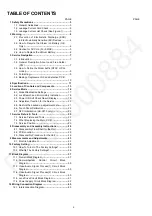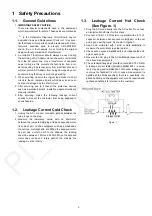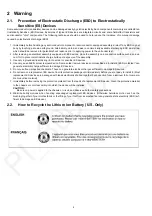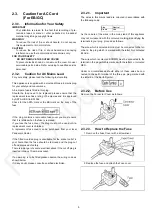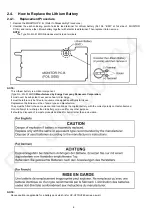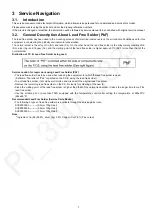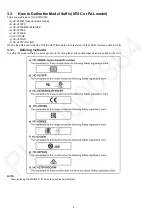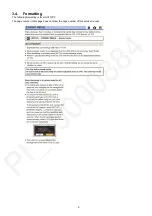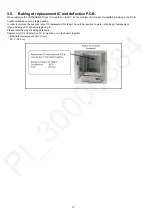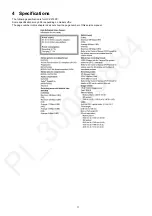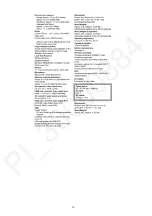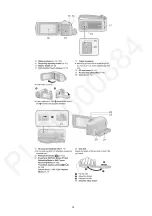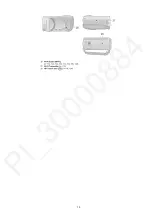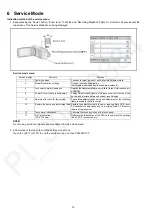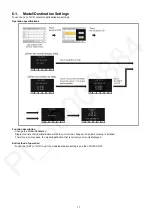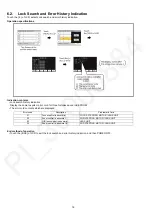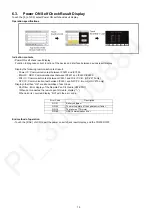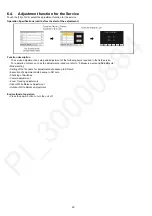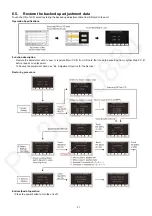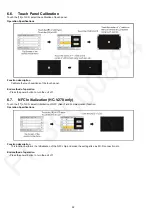
7
3 Service Navigation
3.1.
Introduction
This service manual contains technical information, which allow service personnel’s to understand and service this model.
Please place orders using the parts list and not the drawing reference numbers.
If the circuit is changed or modified, the information will be followed by service manual to be controlled with original service manual.
3.2.
General Description About Lead Free Solder (PbF)
The lead free solder has been used in the mounting process of all electrical components on the printed circuit boards used for this
equipment in considering the globally environmental conservation.
The normal solder is the alloy of tin (Sn) and lead (Pb). On the other hand, the lead free solder is the alloy mainly consists of tin
(Sn), silver (Ag) and Copper (Cu), and the melting point of the lead free solder is higher approx.30°C (86°F) more than that of the
normal solder.
Distinction of P.C.B. Lead Free Solder being used
Service caution for repair work using Lead Free Solder (PbF)
• The lead free solder has to be used when repairing the equipment for which the lead free solder is used.
(Definition: The letter of “PbF” is printed on the P.C.B. using the lead free solder.)
• To put lead free solder, it should be well molten and mixed with the original lead free solder.
• Remove the remaining lead free solder on the P.C.B. cleanly for soldering of the new IC.
• Since the melting point of the lead free solder is higher than that of the normal lead solder, it takes the longer time to melt the
lead free solder.
• Use the soldering iron (more than 70W) equipped with the temperature control after setting the temperature at 350±30°C
(662±86°F).
Recommended Lead Free Solder (Service Parts Route.)
• The following 3 types of lead free solder are available through the service parts route.
SVKZ000001-----------(0.3mm 100g Reel)
SVKZ000002-----------(0.6mm 100g Reel)
SVKZ000003-----------(1.0mm 100g Reel)
Note
* Ingredient: tin (Sn) 96.5%, silver (Ag) 3.0%, Copper (Cu) 0.5% (Flux cored)
Summary of Contents for HC-V270PP
Page 12: ...12 ...
Page 14: ...14 ...
Page 15: ...15 ...
Page 25: ...25 8 2 PCB Location ...
Page 28: ...28 8 3 1 Removal of the Side Case L Unit Fig D1 Fig D2 ...
Page 31: ...31 8 3 6 Removal of the Lens Frame Unit Fig D8 Fig D9 ...
Page 33: ...33 Fig D12 8 3 9 Removal of the Top Operation BATT Catcher P C B Fig D13 ...
Page 34: ...34 8 3 10 Removal of the R Frame Unit Speaker LCD Unit Fig D14 Fig D15 ...
Page 36: ...36 Fig D18 8 3 12 Removal of the Spring Holder Bar rier Lever Fig D19 ...
Page 38: ...38 8 3 15 Removal of the MOS Unit IR Cut Grass Fig D22 Fig D23 ...
Page 39: ...39 Fig D24 8 3 16 Removal of the 2nd Stepping Motor Fig D25 ...
Page 40: ...40 Fig D26 8 3 17 Removal of the 3rd Stepping Motor Fig D27 ...
Page 41: ...41 Fig D28 8 3 18 Removal of the Focus Motor Fig D29 ...
Page 42: ...42 Fig D30 ...
Page 46: ...46 9 1 2 Adjustment Items Adjustment item as follows ...
Page 49: ...49 ...
Page 50: ...50 ...
Page 51: ...51 ...
Page 52: ...52 ...
Page 53: ...53 ...
Page 54: ...54 ...


